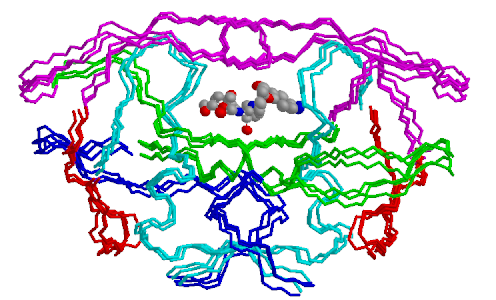TLS Motion Determination Home
| TLS Motion Determination (TLSMD) analyzes a macromolecular crystal structure for evidence of flexibility, e.g. local or inter-domain motions. It does this by partitioning individual chains into multiple segments that are modeled as rigid bodies undergoing TLS (Translation/Libration/Screw) vibrational motion. It generates all possible partitions up to a maximum number of segments. Each trial partition is scored by how well it explains the observed atomic displacement parameters ("B values") that came out of crystallographic refinement. |
|
||
| Submit your structure using the Start a New Job page. TLSMD is computationally expensive, so jobs are handled by a run queue. You can monitor the progress of your run on the Job Status page. The server will notify you by Email when the job has finished. |
- Statistics for each model that describe how well it accounts for the thermal motion observed in the crystal structure.
- Various plots and graphical images showing the implied inter-domain or other motions.
- An animation of the implied motion via the Jmol Java applet
- Modified PDB files and TLS input files that can be used for further crystallographic refinement in Refmac5 or phenix.refine.
- These same files can be used for more detailed inspection and figure generation in the TLSView interactive viewer.
More information about TLS groups, interpretation of the TLS parameters, and interactive visualization of TLS models can be found in the reprints below, and in the TLSView Manual. TLSView is part of the Python Macromolecular Library (mmLib).
Note: TLSMD is a work in progress. Expect it to change. Please let us know of any problems, suggestions, or blinding revelations inspired by the analysis. If you use TLSMD results to refine or analyze your structure, please cite the papers below.
| Please cite: | Contact us: | ||
| TLSMD: | J Painter & E A Merritt (2006) Acta Cryst. D62, 439-450 | reprint: (PDF) | Ethan Merritt <merritt _at_ u.washington.edu> |
| server: | J Painter & E A Merritt (2006) J. Appl. Cryst. 39, 109-111 | reprint: (PDF) | |
Last Modified 13 June 2012
